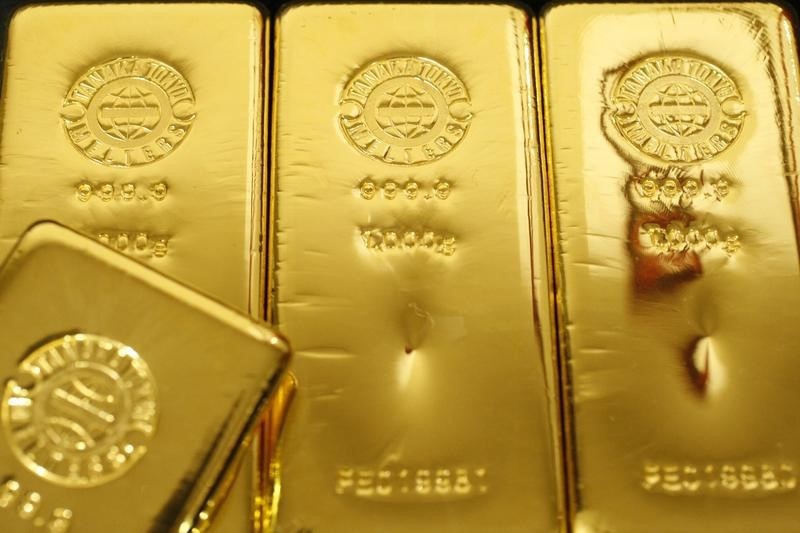Investing.com - Gold futures swung between small gains and losses on Tuesday, as investors digested a batch of mostly weaker than expected U.S. economic data while focusing on the start of the Federal Reserve's two-day monetary policy meeting due to begin later in the day.
Gold for December delivery on the Comex division of the New York Mercantile Exchange inched up $1.10, or 0.09%, to trade at $1,167.30 a troy ounce during European morning hours. A day earlier, gold tacked on $3.40, or 0.29%.
The Conference Board said its index of consumer confidence fell to a three-month low of 97.6 in October from a reading of 102.6 in September. Analysts expected the index to rise to 103.0 this month.
The report came after the Commerce Department said total durable goods orders decreased by 1.2% last month, matching forecasts. Orders for durable goods in August were revised to a drop of 3.0% from a previously reported decline of 2.3%.
Core durable goods orders, which exclude volatile transportation items, fell 0.4% in September, compared to expectations for an increase of 0.1%. Core durable goods orders slumped 0.9% in August.
Investors were looking ahead to Wednesday’s monetary policy announcement by the Fed for fresh indications on the timing of an initial rate hike.
Market players have been trying to gauge when the Fed will raise interest rates for the first time in nearly a decade after recent economic reports offered a mixed picture of the U.S. economy.
The timing of a Fed rate hike has been a constant source of debate in the markets in recent months.
Elsewhere in metals trading, copper for December delivery on the Comex division of the New York Mercantile Exchange tacked on 1.6 cents, or 0.69%, to hit $2.373 a pound during morning hours in New York.
Data released earlier showed that Chinese industrial profits slipped 0.1% from a year earlier in September, compared to an 8.8% tumble in the previous month.
The weaker than expected data reinforced views that Beijing will roll out additional support measures for the world's second largest economy.
Copper prices have been under pressure in recent sessions as persistent worries about future demand from top consumer China weighed.
The Asian nation is the world’s largest copper consumer, accounting for almost 40% of world consumption last year.
